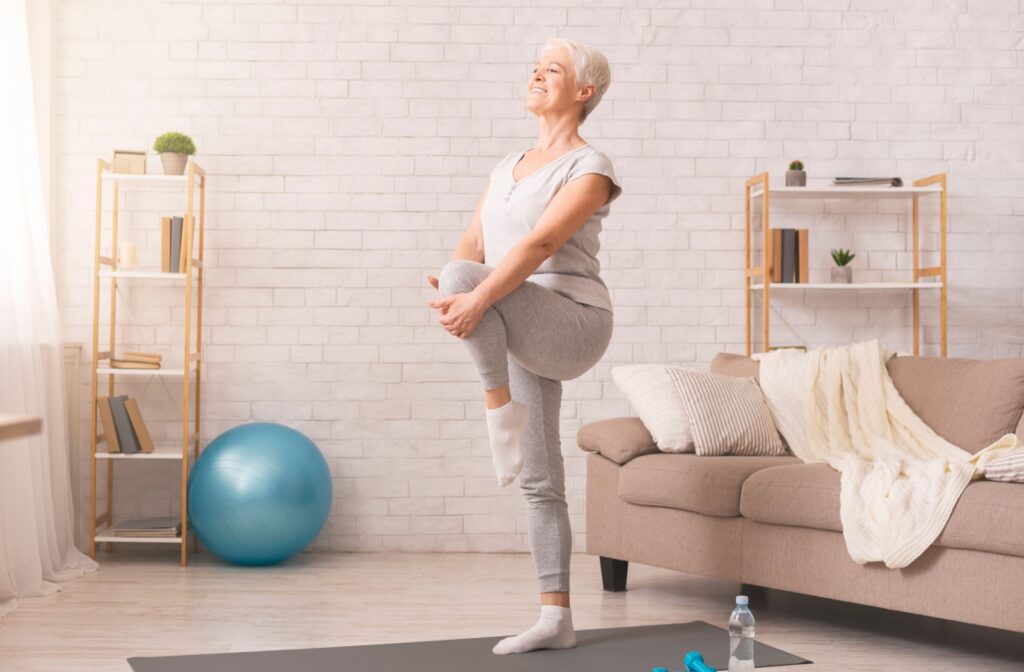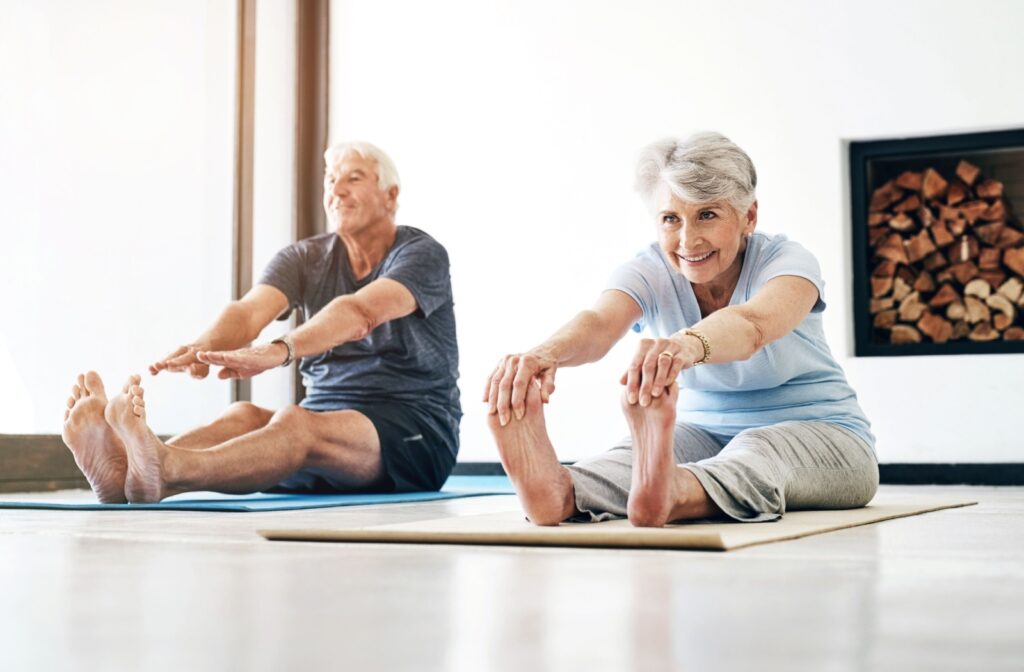A healthier body is a valuable thing. For many adults, it means the ability to stay active and independent with age. However, age can sometimes bring unique challenges, like tight hips, that make everyday life a little more frustrating.
The good news is that certain stretches, habits, and exercises can help reduce this irritation. When performed carefully, specific targeted exercises can help loosen tight muscles and joints, which helps restore independence to older adults.
Why Hip Tightness Can Be a Problem for Seniors
Hip tightness can be frustrating. It often stems from reduced flexibility and a lack of overall movement. It leads to stiffness, which makes everyday activities more of a challenge. This can even increase the risk of falls and cause poor posture, pain, and balance issues.
Falls aren’t just a temporary problem. They can easily lead to all kinds of long-term problems, like chronic pain or broken bones. This is why it’s so important to address problems like tight hips sooner rather than later—it’s a proactive way to stay safer and healthier.
Safe Activities to Stay Active & Prevent Hip Tightness
Remaining active doesn’t have to mean intense workouts and complicated routines. Simple, everyday changes to your habits and lifestyle go a long way.
Walking
Walking is one of the simplest and most effective ways to stay mobile and maintain joint health. The CDC recommends that seniors aim for 30 minutes of brisk walking five days a week. Even just a few minutes every day can add up over time.
Walking encourages circulation and helps maintain strength in the legs and hips. Make sure to walk at your own pace and focus on what’s comfortable. It’s also a great social activity—you can walk with friends or join a local group and enjoy meeting new people.
Strength & Balance Workouts
Adding light strength exercises and balance training twice a week can further prevent tight hips and reduce the risk of falls. Focus on simple movements, such as chair squats or gentle resistance band pulls. Balance exercises, like standing on one leg or side-stepping, are equally effective.
However, when starting a new exercise, make sure to be careful. Starting too much at once can lead to injuries and safety hazards, so check in with your doctor before making any big changes.
Stretches to Loosen Tight Hips
Incorporating stretches into your day can make a big difference for tight hips. Regular stretching improves mobility, reduces pain, and helps keep your joints in motion.
Standing Lunge
The standing lunge helps release tension in your hip flexors and lower back.
- Begin by standing with your feet shoulder-width apart and your hands on your hips.
- Take a step forward and slowly bend the front knee while extending the back leg.
- Hold for 30 seconds, using a chair or wall for balance if needed, before switching sides.
You can repeat this several times to slowly loosen your hips. Make sure to keep your movements slow and consistent to avoid straining yourself.
Prone Leg Raise
Perfect for strengthening your hips and reducing stiffness, prone leg raises also engage the core.
- Lie face down on a comfortable surface with your hands resting under your head.
- Tighten your stomach, slowly lift one leg, hold it for a few seconds, and lower it down.
- Repeat 10 times, then switch legs. You can also do this stretch on a firm mattress if getting to the floor feels challenging.
It helps to repeat this exercise several times, with breaks in between, so you can rest.

Side Leg Raise
The side leg raise targets the outer hip muscles and improves range of motion.
- Lie on your side with your legs straight, stabilizing yourself on your forearm if needed.
- Raise the top leg slowly, hold briefly, and bring it back down.
- Perform 5 slow movements on one side and repeat on the other side.
Remember, moving at your own pace will help prevent strain or injury.
Tips for Safer Exercise as a Senior
Staying safe while exercising should always be a priority. Listen to your body and avoid pushing past your comfort zone. Some muscle tension is normal when stretching, but sharp pain is not.
Some tips for safer exercise as a senior include:
- Wearing comfortable, supportive shoes.
- Staying hydrated before, during, and after exercise.
- Using stable furniture or supports for balance if needed.
- Starting with low-impact activities and gradually increasing intensity.
- Taking breaks when feeling tired or unsteady.
When in doubt, consult a physical therapist or caregiver to guide your routines. Remember—having a supportive community around you makes a bigger difference than most people think.
Staying Comfortable & Active as a Senior
Living an active lifestyle doesn’t have to be complicated. By incorporating simple movements, such as walking or stretching, you can address tight hips and improve mobility. This is a great way to maintain your quality of life and improve your ability to stay independent.
Here in our community at Merryvale Senior Living, we love supporting residents on their journey to a healthier lifestyle. We’re ready to support you every day in a place that feels just like home.
Schedule a tour with our team today to learn more about how we can help you!




